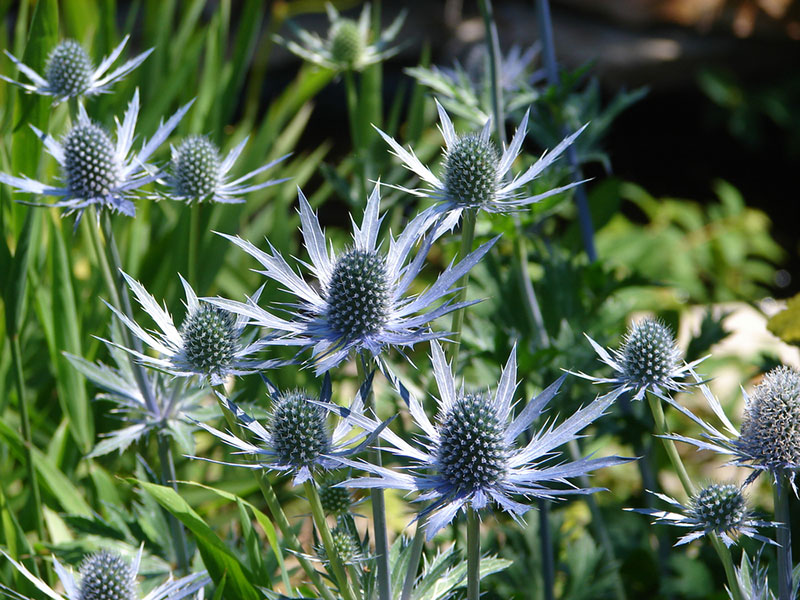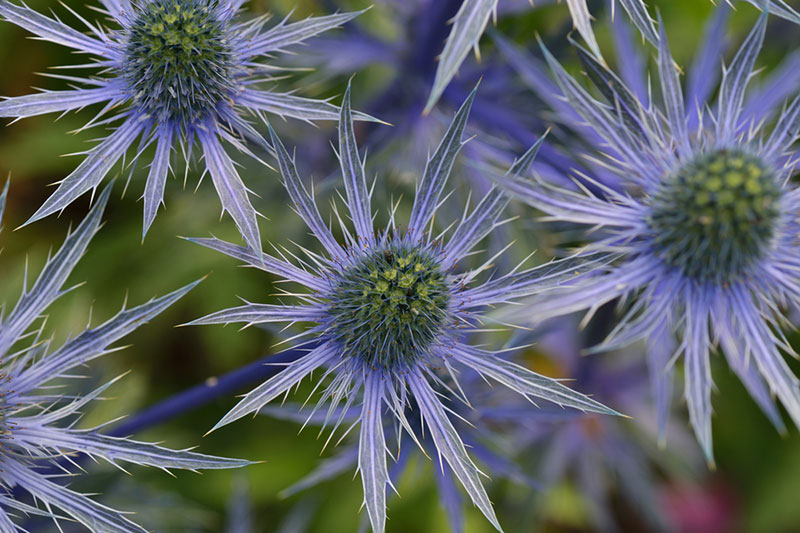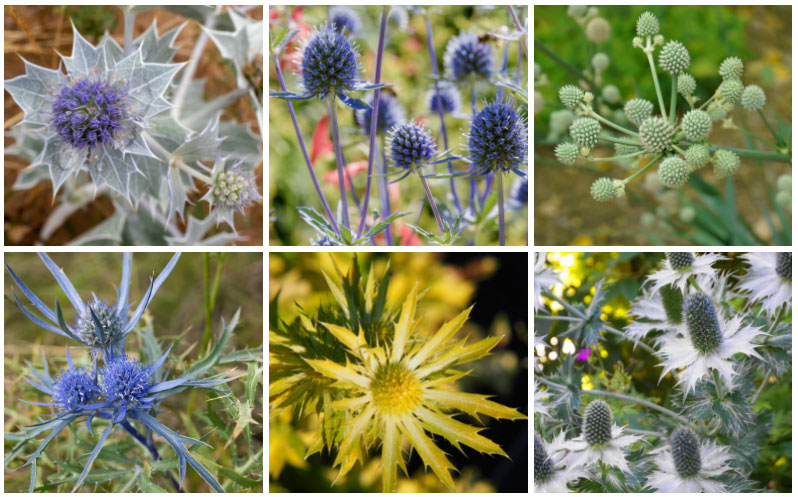
Sea Holly is a perennial that has stunning bluish-purple blooms that resemble small thistles. When mature, the plant will be between 2 and 4 feet in height with a spread of about 1 to 2 feet.
It can grow outdoors in hardiness zones three through nine.
Overall, this is a plant that requires very low maintenance to take care of it, but there are some tips that you may want to be aware of if you choose to grow the plant.
Let’s take a look at some of the specific care that it requires to grow in this guide.
Light and Temperature Requirements
This plant will give you the most blooms when it can grow under full sun conditions. They can also grow in partial shade, but too much shade can cause the stem to be weaker, which means that it will produce fewer blooms. In addition, the stem may need to be staked to give it the support that it needs as it is growing.
Sea Holly is challenging to grow in colder conditions, so you will want to grow it in a part of the country where the temperature stays between 55 and 60 degrees Fahrenheit. Try to avoid temperatures above 70 degrees Fahrenheit, endless you are germinating seeds for the plant to grow because the plant will not do well in higher temperatures and humidity.
Water Requirements
When it comes to water, this is a very drought-tolerant plant, which means that once it reached maturity, it will not need to be given water often. The only exception would be if there were a heatwave or an extended period without rain. Too much water is bad for the plant because it can cause root rot, so make sure that the Sea Holly is planted away from plants that need a lot of excess water so that the roots don’t absorb the water intended for another plant.

Soil and Fertilizer Requirements
Since this plant prefers dry soil to grow, planting it in well-draining soil is best. It will grow in soil that is any pH level, but sandy soil that does not hold water will be best. This is not a plant that needs fertilizer to grow, but adding some organic matter of compost to your soil will only benefit it.
Deadheading and Pruning
Even though this plant does not require much maintenance, it is essential that deadheading is a part of the care that it gets. All you need to do is pinch the flowers that are done blooming off of the plant. If they are difficult to pinch off, then the old flowers can be cut off instead. This will allow new blooms to appear. When the flowers are done blooming, the flower stems should all be removed from the plant so that only the green foliage remains.
Propagation
The propagation of this plant is a bit different than you may be used to because it has taproots that are difficult to cut through. To split the plant into two and create a new plant, you will need to carefully dig up the plant with all of the roots and slice away a section of the roots to create a root cutting. Make sure that the cutting is less than 1/3 of the original plant.
Once the cutting is taken, the parent plant needs to be put back in the soil right away. Place the section of root in soil, making sure that the cut end is upright right below the soil’s surface. In the spring, the segment should begin creating new roots, and green shoots will emerge from the soil in time.
Growing from a Seed
This plant can also be grown from a seed. For the best results, you will want to chill the seed in the refrigerator for a few weeks to stimulate growth. After about a month, plant the seed outdoors, and in two to three weeks, it will begin to germinate. Keep the plant watered and in a lot of sunlight until it reaches maturity. Remember, this plant may not bloom the first year that it grows.
Pests and Diseases
Pests are not really an issue for Sea Holly, except for slugs. However, if your plant is located in a dry, sunny location, slugs will not bother with your plant. Root rot can become an issue if the plant gets too much water or sets in wet soil for an extended period. Powdery mildew can also be an issue if the plant is not kept in a dry, sunny location, but this can easily be treated by cleaning the residue from the leaves.





